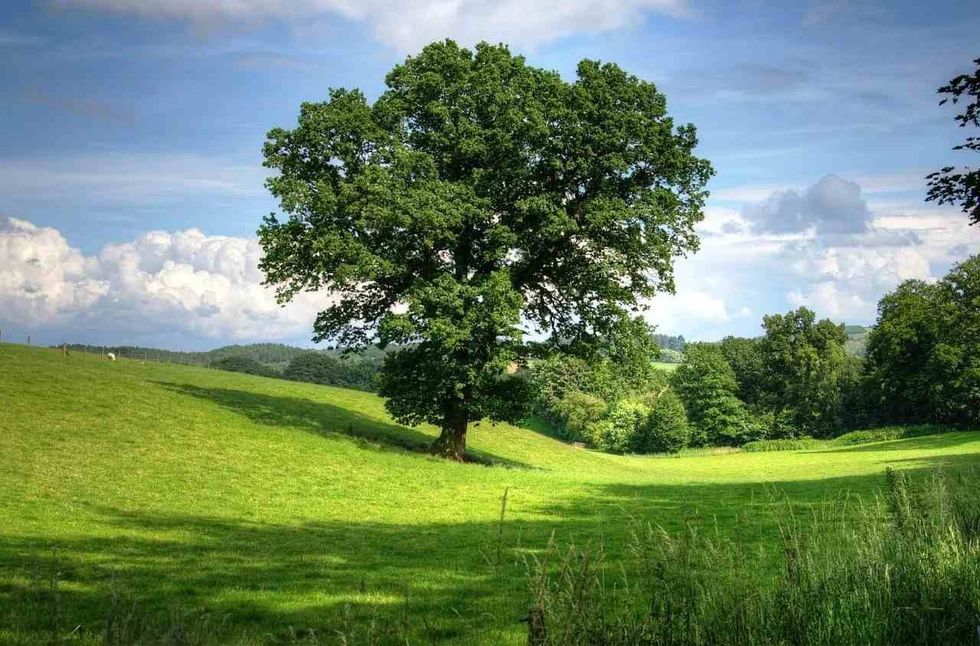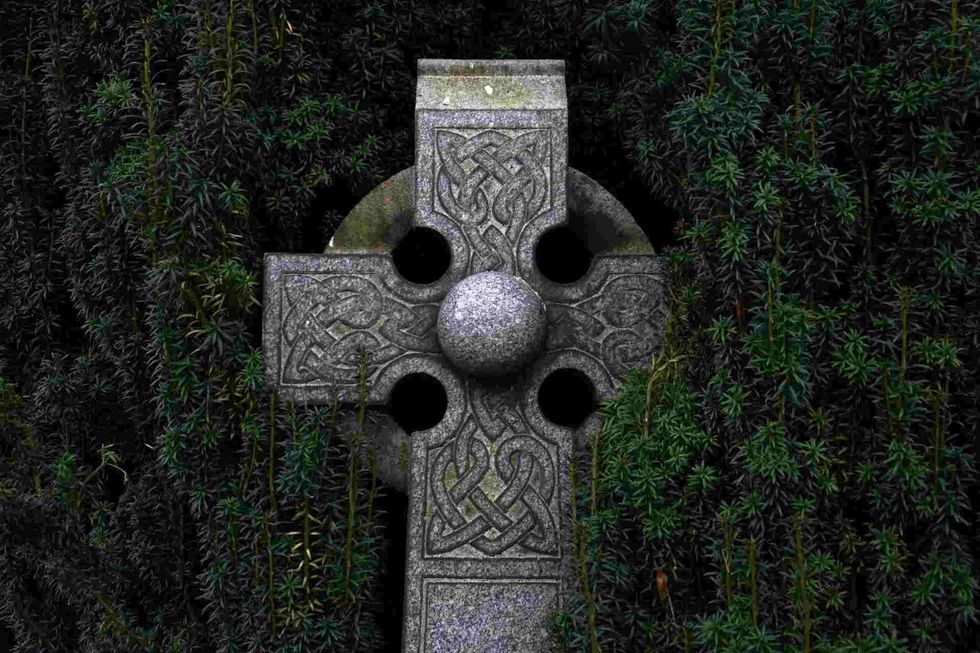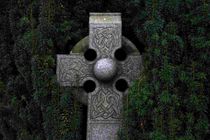23 Fascinating Anglo-Saxon Facts You Probably Didn't Know About!

The Old English or the Anglo-Saxon period of history begins the long journey of a nation which we now know as England.
The term England came from the Anglo-Saxons as they were the Angles and subsequently the place where they resided was named ‘the land of the Angles.’ The reign of the Anglo-Saxons continued for almost 600 years from 450 AD to October 14, 1066.
The Anglo-Saxons remained in England between the Romans went away and the Normans invaded the country. People from Scandinavia migrated to Britain, taking up their own areas to look after.
The power vacuum left behind by the Romans was filled by these immigrants. The journey was not all smooth sailing as they had to fight with the Vikings for regaining their lands. They also faced resistance from many Danish kings, the most notable among them being King Canute.
The Anglo-Saxons were the first English people in the world. The whole concept of the English monarchy came from these people.
A number of tribes arrived from various parts of Europe after the Roman army left Britain. These tribes formed the Anglo-Saxons.
Most of the people were farmers who were searching for some new land to grow crops as floodwater had made it impossible to farm in their homeland. They built a new empire, rich in culture.
The map of Britain was changed permanently during the Anglo-Saxon period. Many of the names of the places are still in use today such as Sussex and Essex. The people were fond of merriment and they spent a major part of the night in the celebration by drinking and feasting.
One of the famous archeological sites of the Anglo Saxon era is Sutton Hoo. It is a grave consisting of a whole ship with the body of a king and his possessions.
If you like this article and enjoy going through it, do not forget to check out similar articles on Anglo-Saxon coins facts and Anglo-Saxon church facts.
Why did the Anglo-Saxons invade Britain?
A number of factors led to the Anglo-Saxons invading Britain in the fifth century. The first invasion was attempted during the fourth century but was halted by the Roman army.
About a hundred years later in 450 AD, Britain was left by the Ancient Romans, creating an opportunity for outsiders to invade the nation. The outsiders came from various parts of Europe belonging to the tribes of Anglo, Saxon, and Jute.
Anglo and Saxon were the largest of the three and this is how the name ‘Anglo-Saxons’ came to be. The tribes were full of fierce people and often fought one another. A strong warrior ruled over each tribe and look after their people.
The people came from northern Germany, Denmark, and the Netherlands via wooden boats. A significant portion of these people were farmers before coming to Britain who looked for new lands for agriculture.
A sixth-century monk, Gildas, is of the opinion that Saxon tribes were employed to protect Britain after the Roman army left. Hence, the Anglo-Saxons were invited as immigrants.
Some centuries later, another monk, Bede, writes that these immigrants were quite powerful. The British were ruled over by someone named Vortigern. During a conference between British nobles and Anglo-Saxons in 472 AD, hidden knives were used by the Anglo-Saxons to murder the British.
Vortigern did not lose his life but he had to give away some huge parts of Britain to the tribals. He was now a ruler in name, only working as a puppet for the Anglo-Saxons.
What was Anglo-Saxon life like?
The Anglo-Saxon era was a culturally rich period with its own religion, beliefs, and language. Let us take a look into some of the different aspects of Anglo-Saxon life.
The Old English people made their houses out of wood having thatched roofs. The excavation of the houses shows that the people practiced some prehistoric version of open plan living. Maximum houses consisted of only a single room.
There was no need for more rooms as the people ate, slept, and did their job in one location. The chief of the village lived in the largest house which housed his warriors beside him.
It included a long hall having a stone fire near the middle portion. From the walls hung battle armor and hunting trophies. The walls had tiny windows with a hole near the roof that allowed the smoke to escape.
The Romans had left behind stone houses and roads but it was not liked by the Anglo Saxons. They were searching for a place with plenty of natural resources such as water, food, and wood. The forests of Britain were like providence to them.
Agriculture was the most important source of livelihood for the people. Small villages with tiny houses were a common sight.
The area around the house was used for growing produce. Each village was surrounded by a high fence so that the cattle could be protected from wild animals such as wolves and foxes. The fences helped them to keep out enemies as well.
In the early parts of the Old English age, the people were pagans and different gods were worshipped by them, the chief being Woden. They had various gods for different things including weather, war, family, and agriculture. The people were superstitious in nature.
They had faith in lucky charms and magic spells. Even the thought of dragons was real for them. A number of Christian traditions that are in practice today have come from the Old English period, although they were not part of Christianity.
St. Augustine was sent to Britain by the Pope in AD 597. The aim of St. Augustine was to convert the Anglo-Saxons living in the nation into Christians. The first Old English king who turned to Christianity was King Ethelbert of Kent.
All other kings before him were pagans. Soon, large parts of the population changed their religion and adopted Christianity. A number of monasteries and churches began to be constructed across Britain.
The chief of the tribe gave their name to the early villages to let everyone know about the person who is in charge.
The immigrants settled in various corners of the nation – the Angles in East Anglia, the Jutes in Kent, and the Saxons in Middlesex, Sussex, Wessex, and Essex (whether they lived in the middle, the south, the west, or the east.
Some of the chiefs understood the advantage of walled cities and they erected their wooden houses enclosed in the stone walls left by Romans.
The people loved to eat and make merry. The chief would often host large feasts in his hall for the villagers.
The Anglo-Saxon society liked to party. They cooked their meat on the fire, drank beer, ate bread, and sang songs late into the night. Barley, oats, and wheat were grown along with vegetables like carrots and parsnips.
Cattle, sheep, and pigs provided milk, wool, and meat to the villagers. They did not waste anything – animal fat was used as lamp oil, deer antlers provided knife handles, and much more.
The clothes worn by the Anglo-Saxons were made by themselves out of natural items. The males used linen or wool to make long-sleeved tunics which were often decorated with patterns.
Woolen trousers were worn under the tunic which was held in place by leather belts. The belts had utility as they could be used to hang the tools required such as pouches and knives.
The shoes were created of leather and tied up with toggles and laces. The Anglo-Saxon women used to wear an under-dress made of wool or linen as well as an outer dress such as a pinafore named ‘peplos’.
This was attached with the underlayer with the help of two brooches at the shoulders. The women were fond of jewelry and they sometimes wore beaded necklaces, rings, and bracelets.
What language did the Anglo-Saxons speak?
The modern English language has come from the evolution of the Anglo-Saxon language or the Old English language. It was made up of elements of Scandinavian, Frisian, and Old High German languages.
To the people who know Modern English, the Old English language might seem like a totally different language. The epic poem Beowulf was written in the Anglo-Saxon language and remains one of the most well-known epics of the world. The language spoken by the inhabitants of England during this time was Welsh, which is a Celtic language.
The names of various places in modern England have come from their original Anglo-Saxon ones. The name provides hints regarding the original settlement of the people.
Such as - 'wich' meaning farm and 'ingham' meaning village. From this clue, you can understand that an Anglo-Saxon village existed where Birmingham now stands and Norwich was supposed to be a farm in the Old English age.
Some of the names of days we use in a week have their origin in the Anglo-Saxon period. Monday comes from ‘Monandoeg’ while Wednesday is derived from ‘Wodnesdoeg’. The Anglo-Saxon gods inspired some of the names such as ‘Wodnesdoeg’ that is named after the god Woden. The term has the meaning of Woden’s Day.
The Anglo-Saxons used most of the letters that can be found in the Modern English alphabet. The exceptions being j, q, and v not a part while the letters z and k were used very rarely. Three extra letters were used by the Anglo-Saxons.

When was the Anglo-Saxon period?
The Anglo-Saxon period extended for 600 years from the fifth century to the 11th century.
The Old English age began when Romans left Britain in 410 AD. The Picts smashed Hadrian’s wall in 367 AD.
The warlike tribes coming from Germany settled in Britain after some battles. The various tribes ignited a fire in southern Britain near the middle of the fifth century. From this onslaught, Britain gained a new leader in the form of Ambrosius Aurelianus.
Around 500 AD, a battle took place at Mount Badon or Mons Badonicus that was probably located somewhere near the southwest region of modern England. The Britons handed a huge loss to the Saxons.
Stories emerge that King Arthur had defeated the army but it cannot be verified. An Anglo Saxon king, Penda, ruled from sometime between 626-655 AD. He killed a number of his rivals by himself.
Being one of the final pagan Anglo Saxon kings, Penda gave up the body of King Oswald of Northumbria to the god Woden. He amassed a huge treasure from defeating his rival kings.
The Vikings made several attempts to invade Britain beginning from 793 AD. They looted and destroyed villages and towns along the coastline of Britain.
They settled in parts of the nation and renamed York to Jorvik. The Anglo-Saxon King of Wessex, Alfred the Great, was successful in stopping the Viking invasion.
He is one of the most important kings of England who wanted the best for his subjects. The armies of Britain became stronger under him. Alfred the Great started the Anglo-Saxon Chronicle to record annual events.
The Anglo-Saxon Chronicle is the most significant source of the history of England. He knew the importance of good education and was responsible for the translation of Latin texts into Old English so that the local people could understand them.
King Edgar was among the most powerful kings of the nation as of yet. His son Edward was murdered by the grooms of his half-brother Aethelred in AD 978. His body was exhumed and subject to rebury in 979 AD. It was rediscovered in 1931 and finally, in 1984 he got a proper burial.
The Battle of Hastings in 1066 AD was a turning point in the history of England. The Anglo-Saxon King Edward passed away without an heir.
King Harold II was chosen as the ruler but this was opposed by William the Conqueror hailing from Normandy and the Norwegian King Harald Hardrada. William brought his army to Britain and thus began the Battle of Hastings.
Harold was executed and William became the first Norwegian to rule Britain as King William I. When Harold died, Edgar Atheling was officially declared as the king but he never wore the crown.
Which were Anglo-Saxon countries?
The country that is known as England, came much later after the arrival of the Anglo-Saxons in Britain.
A total of seven Anglo-Saxon kingdoms existed among the conquered areas of Britain. These were Northumbria, Essex, East Anglia, Mercia, Wessex, Kent, and Sussex.
Each of these countries was ruled by an Anglo-Saxon king and asserted their independence fiercely. The nations had similar features in the form of pagan religions, cultural and socioeconomic ties, and similar languages. But the people were highly loyal to their Anglo-Saxon kings and did not trust anyone coming from another nation of Anglo-Saxon Britain.
The seven Anglo-Saxon kingdoms were collectively called Heptarchy and all of them wanted to dominate the remaining six. The first Anglo-Saxon king to rule over all of Anglo-Saxon England was Egbert in AD 802.
Here at Kidadl, we have carefully created lots of interesting family-friendly facts for everyone to enjoy! If you liked our suggestions for 23 fascinating Anglo-Saxon facts you probably didn't know about!, then why not take a look at Anglo-Saxon food or Vikings and Anglo-Saxons facts?
We Want Your Photos!
More for You
Bachelor of Science specializing in Microbiology

Oluwatosin MichaelBachelor of Science specializing in Microbiology
With a Bachelor's in Microbiology from the Federal University of Agriculture, Abeokuta, Ogun State, Oluwatosin has honed his skills as an SEO content writer, editor, and growth manager. He has written articles, conducted extensive research, and optimized content for search engines. His expertise extends to leading link-building efforts and revising onboarding strategies.
Disclaimer
1) Kidadl is independent and to make our service free to you the reader we are supported by advertising. We hope you love our recommendations for products and services! What we suggest is selected independently by the Kidadl team. If you purchase using the Buy Now button we may earn a small commission. This does not influence our choices. Prices are correct and items are available at the time the article was published but we cannot guarantee that on the time of reading. Please note that Kidadl is a participant in the Amazon Services LLC Associates Program, an affiliate advertising program designed to provide a means for sites to earn advertising fees by advertising and linking to Amazon. We also link to other websites, but are not responsible for their content.
2) At Kidadl, we strive to recommend the very best activities and events. We will always aim to give you accurate information at the date of publication - however, information does change, so it’s important you do your own research, double-check and make the decision that is right for your family. We recognise that not all activities and ideas are appropriate for all children and families or in all circumstances. Our recommended activities are based on age but these are a guide. We recommend that these ideas are used as inspiration, that ideas are undertaken with appropriate adult supervision, and that each adult uses their own discretion and knowledge of their children to consider the safety and suitability. Kidadl cannot accept liability for the execution of these ideas, and parental supervision is advised at all times, as safety is paramount. Anyone using the information provided by Kidadl does so at their own risk and we can not accept liability if things go wrong.
3) Because we are an educational resource, we have quotes and facts about a range of historical and modern figures. We do not endorse the actions of or rhetoric of all the people included in these collections, but we think they are important for growing minds to learn about under the guidance of parents or guardians.







